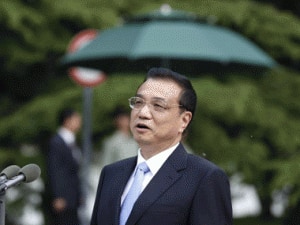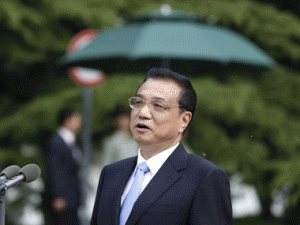Chinese Premier Li Keqiang will be landing in New Delhi at 3.20 pm on Sunday, his first overseas visit since he assumed charge a little over two months ago. India should not be bowled over by this ingenious diplomatic symbolism from China wherein Li is travelling first to India and then from here he reaches Pakistan on 22 May. India needs to give a tough message to Li while rolling out a red carpet for him. Here is a pithy list of four must-dos for the Indian elephant as it engages with the Chinese dragon at the top level over the next two days. Set Up $ 15 Billion China-specific Mountain Corps of Indian Army This must be the first and foremost in the Indian strategic moves vis a vis China. India should set up its much-awaited $ 15 billion mountain corps of the Indian Army that has been pending approval of the apex Indian security body, the Cabinet Committee on Security (CCS). A high point of Li’s India mission would be to ensure that India does not make this move. That is why the Chinese have pitched a border defence cooperation agreement to the Indians which proposes that the troop levels should be frozen at the border and thus aims at curbing the Indian military plans. This proposal will be on top of Li’s agenda. [caption id=“attachment_795401” align=“alignleft” width=“300”]  Li Keqiang. AFP.[/caption] India must thwart the Chinese designs if it wants to effectively play the Chinese Checkers. After all, the Chinese have gone on a military infrastructure building spree near the Line of Actual Control and have at least five military-oriented airports functioning in Tibet alone which can bring vast number of Chinese troops to the Indian doorsteps in a jiffy. Tibet + Taiwan = Kashmir + Arunachal China must be conveyed in no uncertain terms that the old rules of the game will no longer be applicable as China itself has shifted the goalposts. It is time that the Chinese are conveyed through actions rather than through empty words that India has put behind the Nehruvian era of diplomacy (remember ‘Panchsheel’?) just as China has conveniently forgotten Deng Xiaoping’s advice of keeping a low profile. India needs to make it clear to China that there are no free lunches and if Tibet and Taiwan are its areas of “core concerns”, Kashmir and Arunachal Pradesh are as much “core” territories for India. No, this writer is not suggesting in the least to press the panic button and start issuing stapled visas for travelers from Tibet in a tit-for-tat for Chinese stapled visas for Indian Kashmiris, or upgrading diplomatic relations with Taiwan. These may be the diplomatic weapons for possible use later; not now. In fact, the Indian strategy should be paying China back in the same coin: sweet talking but tough actions. This can be achieved through diplomatic documents that are signed at the end of important bilateral visits. The Indian strategy should be that China should no longer take its support for two T’s – Tibet and Taiwan – for granted. How can this be done? This brings us to the next point. Don’t Play the One-China Broken Record It will be unfair to say that India has been sucking up to China. Actually, it hasn’t been. This may well be contrary to popular perceptions. But one thing should settle the debate – how New Delhi treated the India visit of then Chinese Premier Wen Jiabao in December 2010. That was perhaps the first time in decades when India did not commit itself to One-China theory in the Joint Communiqué issued at the end of Wen’s visit. That was a bold act on part of the UPA government. The Chinese designs in Kashmir had just been revealed. China had taken sides for the first time in the Kashmir dispute between India and Pakistan (by issuing stapled visas to Indian Kashmiris and normal visas to Pakistani Kashmiris). Chinese troops had landed in the Karakoram region of Pakistan in thousands and the Chinese dismissed Indian concerns saying that these were just construction workers who were there temporarily. The Chinese troops are still there. The situation has become graver after Pakistan has handed operations of its Gwadar port to China. When China is unresponsive to India’s core interests, why India should be bothered about the Chinese “core interests” and that too when that list has been expanding, with the South China Sea region becoming the latest addition in that “core” list. Therefore, continue the policy of cold-shouldering China by not mouthing its adherence to the not-so-old one-China policy. The Joint Declaration, expected to be released at the end of Li’s visit, must not have that voluntary admission from China that India believes in one China policy. Bolster Military Infrastructure Around LAC The Chinese respect the strong and the mighty. They will inevitably retrace their offensive steps back once they realize that they are not dealing with the India of 1962. Considering the 15 April Chinese incursion in the Depsang Valley of Ladakh, which was eventually lifted by the Chinese after twenty days, the Indians can no longer be complacent. Offence is the best defence must be the Indian counter. This takes us back to the first point: setting up a strike mountain corps of the Indian Army. The Chinese would very much want the Indians to halt the race of military preparations close to the LAC – a race that the Chinese themselves started. But India must play hard ball to the Chinese in this context. India needs to square the circles the Chinese are attempting through Li’s visit. The writer is a Firstpost columnist and a strategic analyst who can be reached at bhootnath004@yahoo.com
India needs to give a tough message to Li while rolling out a red carpet for him. Here is a pithy list of four must-dos for the Indian elephant as it engages with the Chinese dragon at the top level over the next two days.
Advertisement
End of Article
Written by Rajeev Sharma
Consulting Editor, First Post. Strategic analyst. Political commentator. Twitter handle @Kishkindha. see more


)

)
)
)
)
)
)
)
)



